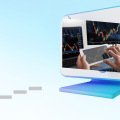How are crypto IDOs implemented?

What is IDO, exactly?
An initial DEX offering, or IDO (DEX), is a way for projects to sell crypto tokens they just made to the public on a decentralized exchange. In a typical IDO, investors can lock their money in a smart contract until the project's native token is made available.
When the project's token first comes out at the token generation event, investors get these new tokens in exchange for the locked funds they gave to the project.
IDOs not only give investors more protection than they would get from an ICO, but they also give projects an easy and inexpensive way to distribute tokens and raise money.
A cryptocurrency wallet like MetaMask is required for investors who want to join an IDO. To join the IDO and cover transaction costs, add extra crypto to the wallet. Take caution when investing money in any IDO.
Always conduct extensive independent research. This means that a project's IDO methods, token economics, vesting schedules, and founding team need to be looked at closely.
All of these things can be different from one platform and project to the next. Most importantly, be sure you can put your faith in any investments you make in projects launching on DEXs.
How is an IDO put to use?
Token sales by IDOs take place on a decentralized exchange (DEX). Tokens from a cryptocurrency project are transferred to the DEX. Users use the platform to send money, while the DEX handles the distribution and ultimate transfer.
These actions take place automatically, thanks to smart contracts on the blockchain.Depending on which DEX is in charge of an IDO, its rules and procedures can be different. However, the following methods are often used:
-
After a project has been checked out, it is approved to run an IDO on a DEX. Users lock up their money in exchange for a predetermined amount of tokens that are sold at a predetermined price. Investors will receive the tokens during the token generation event (TGE), which will take place in the future.
-
An approved investor list, or "whitelist," is typically available. To get on the list, you might have to do some marketing work or just give out the address of your wallet.
-
A portion of the funds raised for the project's token is used to create a liquidity pool. The remainder of the money goes to the team. Investors will be allowed to trade the token after the TGE. The offered liquidity is often locked in for a specific period of time.
-
The user receives the tokens during the TGE, and trading on the LP begins.
IDO: A More Effective Way to Fund Crypto?
The next level is IDOs, which come after other crypto fundraising methods like initial coin offerings (ICOs), security token offerings (STOs), and initial exchange offerings (IEOs). IDOs are a great choice for new projects and companies that want access to cash right away and need to create a coin.
IDOs are advantageous because they offer better and faster liquidity at all price levels. IDOs don't use pre-mines, a method of issuing coins that favors project founders over community members. So, most people agree that they are a good way to start a new cryptocurrency project.
The first ICO was Mastercoin, which took place in July 2013. To raise money, Ethereum staged a token sale in 2014. 3,700 bitcoins, which at the time were equivalent to around $2.3 million, were raised in the first 12 hours.
The inaugural IEO took place on the Index, BitForex, Bit-Z, and Bit-M exchanges on April 17, 2019. Raven Protocol also said in June 2019 that it would make the first IDO that would be listed on the Binance DEX.
What benefits come with having an IDO?
Over time, the majority of token offers have improved in fairness and investor safety. IDOs have some definite advantages that support this:
-
You don't have to work directly on a project to have faith in its smart contracts. A trustworthy IDO platform will have seen a number of profitable sales. You can trust the offering if the smart contracts are the same.
-
Following the sale, there is immediate liquidity available. After a sale, IDOs will put some of their money into liquidity pools to make it easier for people to trade on the market. Slippage and volatility are lessened as a result of this.
-
You don't need to register. No personal information is required in order to take part in the sale. All you need is some money and a wallet. Anyone can therefore use it. However, lacking KYC or AML procedures might also be seen negatively (more on this below).
IDOs are affordable and simple to get for projects. A smaller, less well-known project may find it easier and cheaper to issue its token on a decentralized exchange (DEX) than a large, centralized one.
-
IDOs frequently have anti-whale protections in place, preventing large single-investor purchases of tokens.
Conclusion
Because they are simple to use, inexpensive, and simple to obtain, IDOs have become a regular method for new projects in the crypto market to raise money. Token sales have developed into a standalone industry.
To sum up, it is usually safer to take part in a transaction through a decentralized liquidity exchange than through a project. Nevertheless, choosing the correct project is crucial to an IDO's success. In this regard, nothing beats traditional cryptographic research.
Other articles and publications:
Articles and publications of other companies:
- +1 (1707) 914-591
- 159, Hazi Ismail Road , Banorgati, Sonadangha, Khulna
- sowdream.com/











